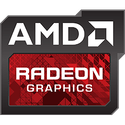
ASRock Unleashes Custom Radeon RX 9070 XT & 9070 GPUs at CES 2025
ASRock has showcased its AMD Navi 48 GPUs on the showroom floor at this year's CES trade event—only hours ago, a TechPowerUp team member familiarized themselves with Taichi, Steel Legend and Challenger options. The new models are offered up in Radeon RX 9070 XT and 9070 variants—these next generation cards are due to arrive later this quarter alongside RDNA 4 and FSR 4 technologies. Out of the gate ASRock representatives were keen to show off their new flagship cog/gear-themed model.
The ASRock Radeon RX 9070 XT Taichi is a very long and chunky proposition—TPU's photos depict a triple-slot design, continuing the legacy of preceding Taichi designs. ASRock has refreshed its custom shrouds and backplates for the RDNA 4 generation—the incoming RX 9070 XT Taichi is quite boxy when compared to its older sibling. Cog wheel graphics on the backplate seem to jump out more due to updated coloration/contrast. The usual Taichi triple-fan config is present here, with a smattering of RGB lighting strips spread across its shroud. Performance and quiet operating modes can be accessed via a rear switch. Another switch—placed next to the card's single 12-pin power connector—gives you the option to turn onboard LED lighting on or off.
The ASRock Radeon RX 9070 XT Taichi is a very long and chunky proposition—TPU's photos depict a triple-slot design, continuing the legacy of preceding Taichi designs. ASRock has refreshed its custom shrouds and backplates for the RDNA 4 generation—the incoming RX 9070 XT Taichi is quite boxy when compared to its older sibling. Cog wheel graphics on the backplate seem to jump out more due to updated coloration/contrast. The usual Taichi triple-fan config is present here, with a smattering of RGB lighting strips spread across its shroud. Performance and quiet operating modes can be accessed via a rear switch. Another switch—placed next to the card's single 12-pin power connector—gives you the option to turn onboard LED lighting on or off.















